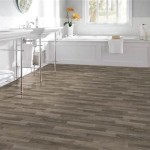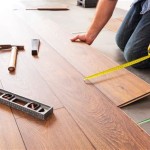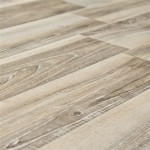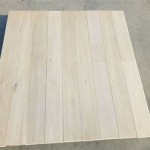Wood Flooring Transition Ideas: Enhancing Your Home's Style and Function
When it comes to flooring, wood remains a timeless and versatile option. However, transitioning between different rooms or floor types can present a design challenge. With careful planning and an eye for detail, you can create seamless and aesthetically pleasing transitions that enhance the beauty and functionality of your home.
Types of Transitions
There are several types of wood flooring transitions, each serving a specific purpose and providing a unique look:
- T-molding: Used to transition between floors of equal height and creates a straight, angled line.
- Reducer: Transitions from a higher floor to a lower floor, providing a gradual slope.
- Threshold: Similar to a reducer, but with a raised edge to protect against moisture or debris.
- Stair nosing: Provides a safe and finished edge for stairs and steps.
Choosing the Right Transition
The type of transition you choose depends on the height difference between the floors and the desired aesthetic. Consider the following factors:
- Height difference: If the height difference is significant, a reducer or threshold may be necessary.
- Floor materials: Match or complement the wood species and finishes of the adjacent floors.
- Design style: Choose a transition that aligns with the overall design theme of your home.
Installation Considerations
Proper installation is crucial for a durable and aesthetically pleasing transition. Here are some tips:
- Cut accurately: Ensure the transition pieces are cut to the correct length and angle.
- Use appropriate fasteners: Nails or screws should be spaced evenly and countersunk flush with the surface.
- Install underlayment: For added stability and sound reduction, install an underlayment beneath the transition.
- Finish the edges: Seal or paint the edges of the transition to match the surrounding floors.
Additional Tips
For a cohesive and polished look, consider these additional tips:
- Vary transition widths: Use wider transitions in high-traffic areas or transitions between different flooring materials.
- Incorporate design elements: Add decorative details to the transition, such as inlays or custom carvings.
- Consider hidden transitions: Opt for transitions that seamlessly blend into the floor for a more subtle look.
Conclusion
By implementing these ideas and considering the various aspects of wood flooring transitions, you can create seamless and aesthetically pleasing transitions that enhance the beauty and functionality of your home. Whether you choose a traditional or modern approach, a well-executed transition can elevate your flooring design and add a touch of style and sophistication to any space.

Floor Transition Ideas Expert Advice Craftedforlife

70 Stunning Tile To Wood Floor Transition Ideas Design

Floor Transition Ideas Expert Advice Craftedforlife

70 Stunning Tile To Wood Floor Transition Ideas Floors Texture House Flooring

70 Stunning Tile To Wood Floor Transition Ideas Mutfak Zemi Ni Fayans Döşeme Ahşap

Flooring Transitions Ideas To Help Make Your Home Flow

Floor Transition Ideas Expert Advice Craftedforlife

Tile To Wood Transition Mix Your Flooring Materials Builddirect

How To Handle Flooring Transitions Wood Tile Carpet

How To Handle Flooring Transitions Wood Tile Carpet
Related Posts








